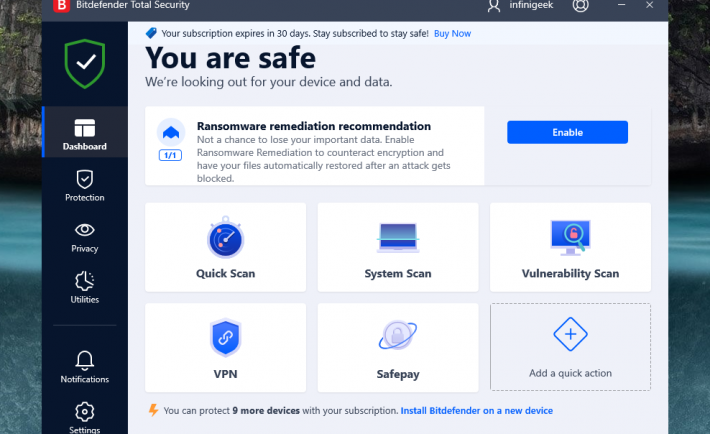
Just like individuals can have their personal data stolen by criminals, so too can businesses have their identities stolen.
Business identity theft involves a criminal impersonating a business, or an employee of a business, for financial gain.
The key difference between business identity theft and consumer identity theft is that the former can be large-scale, and it can end up affecting not only the company but also its employees and clients.
Furthermore, business identity theft can happen to companies of all sizes. So, no matter how big your business is, you need to ensure you take the right steps to prevent and detect business identity theft threats.
How to Prevent Business Identity Theft
While there’s no way of 100% guaranteeing that your business is protected from identity theft, due to cybercriminals using ever-more sophisticated methods, you can help to prevent business identity by using the right tools and taking the appropriate action.
Get Identity Theft Protection

First and foremost, you should get identity theft protection. It warns you when there are any signs that your information could be at risk so that you can take the relevant steps quickly.
To find the right identity theft protection provider, check out the guide from BuyersGuide, in which independent experts review the best providers for identity theft protection.
Encrypt Data

While it’s great to have the safeguard of identity theft protection, you also need to take active steps yourself to stop your business from becoming a victim.
One of the best ways of ensuring sensitive consumer information, such as Social Security numbers and credit card details, is kept safe is to encrypt it prior to transmitting or storing it. That means even if it’s stolen, the cybercriminal won’t be able to read it.
Update Security Software

You should know that you must use a firewall and security software. But it’s easy to overlook how important it is to ensure your protective software is up-to-date.
Perform regular system updates so that there are no security issues and hackers can’t access your systems.
Establish Protocols for Identifying Threats

Working with your IT department, you should establish protocols for identifying identity theft threats and then carry out fraud inspections on a regular basis. Practice things like security freezes and ensure your system knows how to detect suspicious activity.
You also need to have a clear step-by-step plan in case a data breach does happen in order to minimize the impact.
How to Detect Business Identity Theft

You need to be cautious of common cyberattacks like phishing; which involves cybercriminals sending out emails pretending to be from a legitimate company and including a link that asks the person to enter his or her personal details.
And you need to make your employees aware of common methods that criminals use to steal a business’s identity.
Your business can then always be alert to the possibility of identity theft and detect suspicious activity.
You should also be wary of fake invoices, particularly for goods or services that you didn’t order or receive, and duplicate bills for invoices you’ve already paid.
Be cautious of bogus or unlicensed credit card processing companies too. If you go with a fraudulent service, your business could end up paying exorbitant fees in addition to risking having its identity stolen.
Also, remember that business identity theft doesn’t only happen online. If paper documents are still a part of your company’s operations, you need to make sure all old records are shredded. If files containing sensitive information are thrown into the trash, a criminal need only fish them out.
Keep up to date with the latest scams and ways of protecting your business. You can then ensure you’re able to detect and prevent business identity theft from occurring.




